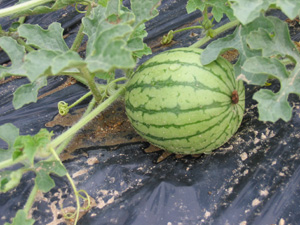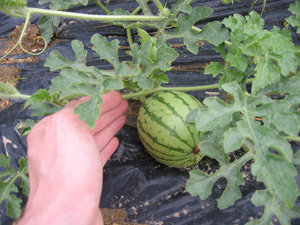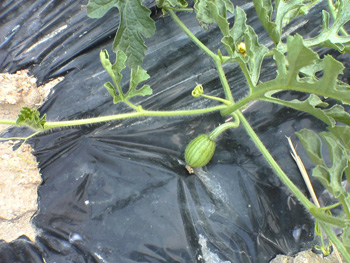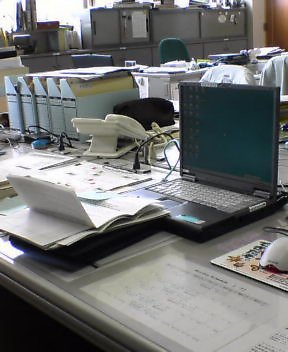Galloway vs. The US Senate: Transcript of Statement
George Galloway, Respect MP for Bethnal Green and Bow, delivered this statement to US Senators today who have accused him of corruption
“Senator, I am not now, nor have I ever been, an oil trader. and neither has anyone on my behalf. I have never seen a barrel of oil, owned one, bought one, sold one – and neither has anyone on my behalf.
“Now I know that standards have slipped in the last few years in Washington, but for a lawyer you are remarkably cavalier with any idea of justice. I am here today but last week you already found me guilty. You traduced my name around the world without ever having asked me a single question, without ever having contacted me, without ever written to me or telephoned me, without any attempt to contact me whatsoever. And you call that justice.
“Now I want to deal with the pages that relate to me in this dossier and I want to point out areas where there are – let’s be charitable and say errors. Then I want to put this in the context where I believe it ought to be. On the very first page of your document about me you assert that I have had ‘many meetings’ with Saddam Hussein. This is false.
“I have had two meetings with Saddam Hussein, once in 1994 and once in August of 2002. By no stretch of the English language can that be described as “many meetings” with Saddam Hussein.
“As a matter of fact, I have met Saddam Hussein exactly the same number of times as Donald Rumsfeld met him. The difference is Donald Rumsfeld met him to sell him guns and to give him maps the better to target those guns. I met him to try and bring about an end to sanctions, suffering and war, and on the second of the two occasions, I met him to try and persuade him to let Dr Hans Blix and the United Nations weapons inspectors back into the country – a rather better use of two meetings with Saddam Hussein than your own Secretary of State for Defense made of his.
“I was an opponent of Saddam Hussein when British and Americans governments and businessmen were selling him guns and gas. I used to demonstrate outside the Iraqi embassy when British and American officials were going in and doing commerce.
“You will see from the official parliamentary record, Hansard, from the 15th March 1990 onwards, voluminous evidence that I have a rather better record of opposition to Saddam Hussein than you do and than any other member of the British or American governments do.
“Now you say in this document, you quote a source, you have the gall to quote a source, without ever having asked me whether the allegation from the source is true, that I am ‘the owner of a company which has made substantial profits from trading in Iraqi oil’.
“Senator, I do not own any companies, beyond a small company whose entire purpose, whose sole purpose, is to receive the income from my journalistic earnings from my employer, Associated Newspapers, in London. I do not own a company that’s been trading in Iraqi oil. And you have no business to carry a quotation, utterly unsubstantiated and false, implying otherwise.
“Now you have nothing on me, Senator, except my name on lists of names from Iraq, many of which have been drawn up after the installation of your puppet government in Baghdad. If you had any of the letters against me that you had against Zhirinovsky, and even Pasqua, they would have been up there in your slideshow for the members of your committee today.
“You have my name on lists provided to you by the Duelfer inquiry, provided to him by the convicted bank robber, and fraudster and conman Ahmed Chalabi who many people to their credit in your country now realize played a decisive role in leading your country into the disaster in Iraq.
“There were 270 names on that list originally. That’s somehow been filleted down to the names you chose to deal with in this committee. Some of the names on that committee included the former secretary to his Holiness Pope John Paul II, the former head of the African National Congress Presidential office and many others who had one defining characteristic in common: they all stood against the policy of sanctions and war which you vociferously prosecuted and which has led us to this disaster.
“You quote Mr Dahar Yassein Ramadan. Well, you have something on me, I’ve never met Mr Dahar Yassein Ramadan. Your sub-committee apparently has. But I do know that he’s your prisoner, I believe he’s in Abu Ghraib prison. I believe he is facing war crimes charges, punishable by death. In these circumstances, knowing what the world knows about how you treat prisoners in Abu Ghraib prison, in Bagram Airbase, in Guantanamo Bay, including I may say, British citizens being held in those places.
“I’m not sure how much credibility anyone would put on anything you manage to get from a prisoner in those circumstances. But you quote 13 words from Dahar Yassein Ramadan whom I have never met. If he said what he said, then he is wrong.
“And if you had any evidence that I had ever engaged in any actual oil transaction, if you had any evidence that anybody ever gave me any money, it would be before the public and before this committee today because I agreed with your Mr Greenblatt [Mark Greenblatt, legal counsel on the committee].
“Your Mr Greenblatt was absolutely correct. What counts is not the names on the paper, what counts is where’s the money. Senator? Who paid me hundreds of thousands of dollars of money? The answer to that is nobody. And if you had anybody who ever paid me a penny, you would have produced them today.
“Now you refer at length to a company names in these documents as Aredio Petroleum. I say to you under oath here today: I have never heard of this company, I have never met anyone from this company. This company has never paid a penny to me and I’ll tell you something else: I can assure you that Aredio Petroleum has never paid a single penny to the Mariam Appeal Campaign. Not a thin dime. I don’t know who Aredio Petroleum are, but I daresay if you were to ask them they would confirm that they have never met me or ever paid me a penny.
“Whilst I’m on that subject, who is this senior former regime official that you spoke to yesterday? Don’t you think I have a right to know? Don’t you think the Committee and the public have a right to know who this senior former regime official you were quoting against me interviewed yesterday actually is?
“Now, one of the most serious of the mistakes you have made in this set of documents is, to be frank, such a schoolboy howler as to make a fool of the efforts that you have made. You assert on page 19, not once but twice, that the documents that you are referring to cover a different period in time from the documents covered by The Daily Telegraph which were a subject of a libel action won by me in the High Court in England late last year.
“You state that The Daily Telegraph article cited documents from 1992 and 1993 whilst you are dealing with documents dating from 2001. Senator, The Daily Telegraph’s documents date identically to the documents that you were dealing with in your report here. None of The Daily Telegraph’s documents dealt with a period of 1992, 1993. I had never set foot in Iraq until late in 1993 – never in my life. There could possibly be no documents relating to Oil-for-Food matters in 1992, 1993, for the Oil-for-Food scheme did not exist at that time.
“And yet you’ve allocated a full section of this document to claiming that your documents are from a different era to the Daily Telegraph documents when the opposite is true. Your documents and the Daily Telegraph documents deal with exactly the same period.
“But perhaps you were confusing the Daily Telegraph action with the Christian Science Monitor. The Christian Science Monitor did indeed publish on its front pages a set of allegations against me very similar to the ones that your committee have made. They did indeed rely on documents which started in 1992, 1993. These documents were unmasked by the Christian Science Monitor themselves as forgeries.
“Now, the neo-con websites and newspapers in which you’re such a hero, senator, were all absolutely cock-a-hoop at the publication of the Christian Science Monitor documents, they were all absolutely convinced of their authenticity. They were all absolutely convinced that these documents showed me receiving $10 million from the Saddam regime. And they were all lies.
“In the same week as the Daily Telegraph published their documents against me, the Christian Science Monitor published theirs which turned out to be forgeries and the British newspaper, Mail on Sunday, purchased a third set of documents which also upon forensic examination turned out to be forgeries. So there’s nothing fanciful about this. Nothing at all fanciful about it.
“The existence of forged documents implicating me in commercial activities with the Iraqi regime is a proven fact. It’s a proven fact that these forged documents existed and were being circulated amongst right-wing newspapers in Baghdad and around the world in the immediate aftermath of the fall of the Iraqi regime.
“Now, Senator, I gave my heart and soul to oppose the policy that you promoted. I gave my political life’s blood to try to stop the mass killing of Iraqis by the sanctions on Iraq which killed one million Iraqis, most of them children, most of them died before they even knew that they were Iraqis, but they died for no other reason other than that they were Iraqis with the misfortune to born at that time. I gave my heart and soul to stop you committing the disaster that you did commit in invading Iraq. And I told the world that your case for the war was a pack of lies.
“I told the world that Iraq, contrary to your claims did not have weapons of mass destruction. I told the world, contrary to your claims, that Iraq had no connection to al-Qaeda. I told the world, contrary to your claims, that Iraq had no connection to the atrocity on 9/11 2001. I told the world, contrary to your claims, that the Iraqi people would resist a British and American invasion of their country and that the fall of Baghdad would not be the beginning of the end, but merely the end of the beginning.
“Senator, in everything I said about Iraq, I turned out to be right and you turned out to be wrong and 100,000 people paid with their lives; 1600 of them American soldiers sent to their deaths on a pack of lies; 15,000 of them wounded, many of them disabled forever on a pack of lies.
If the world had listened to Kofi Annan, whose dismissal you demanded, if the world had listened to President Chirac who you want to paint as some kind of corrupt traitor, if the world had listened to me and the anti-war movement in Britain, we would not be in the disaster that we are in today. Senator, this is the mother of all smokescreens. You are trying to divert attention from the crimes that you supported, from the theft of billions of dollars of Iraq’s wealth.
“Have a look at the real Oil-for-Food scandal. Have a look at the 14 months you were in charge of Baghdad, the first 14 months when $8.8 billion of Iraq’s wealth went missing on your watch. Have a look at Halliburton and other American corporations that stole not only Iraq’s money, but the money of the American taxpayer.
“Have a look at the oil that you didn’t even meter, that you were shipping out of the country and selling, the proceeds of which went who knows where? Have a look at the $800 million you gave to American military commanders to hand out around the country without even counting it or weighing it.
“Have a look at the real scandal breaking in the newspapers today, revealed in the earlier testimony in this committee. That the biggest sanctions busters were not me or Russian politicians or French politicians. The real sanctions busters were your own companies with the connivance of your own Government.”






